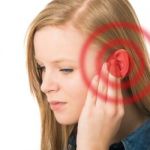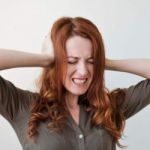October Is National Audiology Awareness Month!

While October is usually associated with beautiful fall colours, pumpkin flavoured coffee and Halloween, it is also an opportunity to celebrate National Audiology Awareness Month!
As audiologists, we are constantly reminded of how hearing loss can negatively affect communication between individuals and their connections to society. The work we do and the services we provide are essential to helping those who may feel isolated at home, behind in school or are suffering in silence.
How can you help raise awareness about the field of Audiology, and about the important work we do in diagnosing and treating hearing loss? Irony not lost, the best thing you can do is make some noise! Start a conversation with your friends, your family, and your work colleagues about hearing loss and how it affects your life? Do you know someone suffering from hearing loss? You definitely do. You might not know you do because people generally don’t talk about it. To make matter worse, many of the people suffering from hearing loss don’t even know they’re suffering from hearing loss!
This October, Leake Audiology is committed to trying to raise awareness about Audiology by focusing on the concerning statistics regarding undiagnosed hearing loss. People tend to think that hearing loss is something that only affects people late in life, but the truth is far more urgent! Here’s some statistics that will hopefully help to get people talking about their hearing health more often and, most importantly, taking the time to get their hearing checked out by a professional!
- About 2 to 3 out of every 1,000 children in the United States are born with a detectable level of hearing loss in one or both ears.1
- More than 90 percent of deaf children are born to hearing parents.2
- Approximately 15% of American adults (37.5 million) aged 18 and over report some trouble hearing.3
- Among adults aged 20-69, the overall annual prevalence of hearing loss dropped slightly from 16 percent (28.0 million) in the 1999-2004 period to 14 percent (27.7 million) in the 2011–2012 period.4
- Age is the strongest predictor of hearing loss among adults aged 20-69, with the greatest amount of hearing loss in the 60 to 69 age group.4
- Men are almost twice as likely as women to have hearing loss among adults aged 20-69.4
- Non-Hispanic white adults are more likely than adults in other racial/ethnic groups to have hearing loss; non-Hispanic black adults have the lowest prevalence of hearing loss among adults aged 20-69.4
- About 18 percent of adults aged 20-69 have speech-frequency hearing loss in both ears from among those who report 5 or more years of exposure to very loud noise at work, as compared to 5.5 percent of adults with speech-frequency hearing loss in both ears who report no occupational noise exposure.4
- One in eight people in the United States (13 percent, or 30 million) aged 12 years or older has hearing loss in both ears, based on standard hearing examinations.5
- About 2 percent of adults aged 45 to 54 have disabling hearing loss. The rate increases to 8.5 percent for adults aged 55 to 64. Nearly 25 percent of those aged 65 to 74 and
- 50 percent of those who are 75 and older have disabling hearing loss.6
- Roughly 10 percent of the U.S. adult population, or about 25 million Americans, has experienced tinnitus lasting at least five minutes in the past year.7
- About 28.8 million U.S. adults could benefit from using hearing aids.8
- Among adults aged 70 and older with hearing loss who could benefit from hearing aids, fewer than one in three (30 percent) has ever used them. Even fewer adults aged 20 to 69 (approximately 16 percent) who could benefit from wearing hearing aids have ever used them.9
- As of December 2019, approximately 736,900 cochlear implants have been implanted worldwide. In the United States, roughly 118,100 devices have been implanted in adults and 65,000 in children.10
- Five out of 6 children experience ear infection (otitis media) by the time they are 3 years old.11
Sources
- Centers for Disease Control and Prevention (CDC). Identifying infants with hearing loss – United States, 1999-2007. MMWR Morb Mortal Wkly Rep. 59(8): 220-223.
Vohr B. Overview: infants and children with hearing loss—part I. Ment Retard Dev Disabil Res Rev. 2003;9:62–64. - Mitchell RE, Karchmer MA. Chasing the mythical ten percent: Parental hearing status of deaf and hard of hearing students in the United States. (PDF) Sign Language Studies. 2004;4(2):138-163.
- Blackwell DL, Lucas JW, Clarke TC. Summary health statistics for U.S. adults: National Health Interview Survey, 2012 (PDF). National Center for Health Statistics. Vital Health Stat 10(260). 2014.
- Hoffman HJ, Dobie RA, Losonczy KG, Themann CL, Flamme GA. Declining Prevalence of Hearing Loss in US Adults Aged 20 to 69 Years. JAMA Otolaryngology – Head & Neck Surgery. December 2016 online.
- Lin FR, Niparko JK, Ferrucci L. Hearing loss prevalence in the United States. [Letter] Arch Intern Med. 2011 Nov 14; 171(20): 1851-1852.
- Based on calculations performed by NIDCD Epidemiology and Statistics Program staff: (1) using data from the 1999-2010 National Health and Nutrition Examination Survey (NHANES); (2) applying the definition of disabling hearing loss used by the 2010 Global Burden of Disease Expert Hearing Loss Team (hearing loss of 35 decibels or more in the better ear, the level at which adults could generally benefit from hearing aids).
- Based on calculations performed by NIDCD Epidemiology and Statistics Program staff: (1) tinnitus prevalence was obtained from the 2008 National Health Interview Survey (NHIS); (2) the estimated number of American adults reporting tinnitus was calculated by multiplying the prevalence of tinnitus by the 2013 U.S. Census population estimate for the number of adults (18+ years of age).
- NIDCD Epidemiology and Statistics Program, based on December 2015 Census Bureau estimates of the noninstitutionalized U.S. population, personal communication; May 2016.
- Based on calculations by NIDCD Epidemiology and Statistics Program staff using data collected by (1) the National Health Interview Survey (NHIS) annually for number of persons who have ever used a hearing aid [numerator], and (2) periodic NHANES hearing exams for representative samples of the U.S. adult and older adult population [denominator]; these statistics are also used for tracking Healthy People 2010 and 2020 objectives. See also Use of Hearing Aids by Adults with Hearing Loss (chart).
- Estimates based on manufacturers’ voluntary reports of registered devices to the U.S. Food and Drug Administration, December 2019.
- Teele DW, Klein JO, Rosner B. Epidemiology of otitis media during the first seven years of life in children in greater Boston: a prospective, cohort study. J Infect Dis. 1989 Jul;160(1):83-94.


